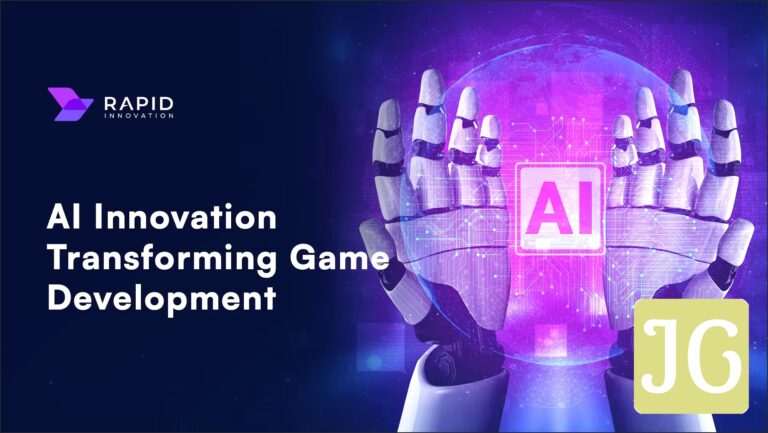In an era where artificial intelligence is no longer a futuristic concept but a pervasive force, its inevitable collision with the gaming industry is reshaping how we play, create, and even compete. From powering in-game NPCs to optimizing hardware performance, AI-driven gaming is rapidly becoming the new normal. Amidst this transformative wave, Razer, a brand synonymous with high-performance gaming peripherals and systems, has emerged as a significant new player, recently unveiling an ambitious AI strategy. But as the industry slides toward an AI-infused future, the critical question remains: will Razer’s promises of AI-enhanced gameplay and streamlined development truly meet the high expectations of a discerning gaming community, especially when early attempts by competitors have stumbled?
Razer’s Ambitious AI Play: A New Era of Gaming?
Razer’s commitment to leading the future of AI gaming is underscored by a substantial strategic investment. The company recently launched its AI Centre of Excellence in Singapore, marking the inaugural phase of a broader global strategy to establish interconnected AI hubs across Europe and the United States. This Singapore facility is poised to become one of the region’s largest and most advanced AI gaming centers, designed to accelerate innovation by cultivating expert talent, conducting advanced research, and fast-tracking product development. Supported by Digital Industry Singapore, Razer aims to hire 150 local AI specialists spanning engineering, data science, and game development disciplines. This move aligns with Singapore’s national vision to strengthen its AI capabilities and lead digital transformation. According to Li-Meng Lee, Chief Strategy Officer at Razer, the goal is clear: to empower game developers with tools that deliver more immersive, intelligent, and efficient gaming experiences at scale. This strategic investment comes as the gaming industry is projected to reach nearly US$400 billion by 2033, with AI gaming alone expected to surge to US$28 billion, growing at a compound annual rate of 28.4%.

Inside Razer’s AI Arsenal: Game Co-AI & QA Companion Explained
Razer Game Co-AI (Formerly Project AVA)
Razer Game Co-AI, originally introduced as Project AVA at CES 2025, is a generative AI copilot designed to revolutionize the player experience through real-time tactical coaching. Leveraging advanced AI, it promises to provide expert advice, personalized guidance, and comprehensive post-game analysis. It can even offer hardware performance insights, ensuring players are always at their peak. Built on Amazon Bedrock, Game Co-AI is designed to be trained on genre- and game-specific data, integrating directly into gameplay to offer immediate tips—from anticipating enemy attacks to suggesting optimal in-game actions during boss fights. This multifaceted AI assistant, envisioned as an esports coach and omnipotent game guide, aims to usher in a new era of interactive, AI-enhanced gaming, learning from the best to help players play smarter in any game.
Key Features:
- Real-time tactical coaching tailored to individual player behavior.
- Personalized guidance and post-game analysis.
- Hardware performance insights.
- Integration directly into gameplay, trained on specific game data.
Razer QA Companion (QA Co-AI)
Razer QA Companion, also known as QA Co-AI, is an AI-powered solution developed to transform game testing and quality assurance. Acting as an intelligent assistant, it automates the detection and logging of bugs, crashes, and performance issues, thereby freeing human testers to focus on critical gameplay nuances. This cloud-native solution promises to significantly boost bug detection efficiency and shorten development cycles, with the potential to reduce overall QA time by up to 50%. Currently in beta testing with AAA, AA, and indie studios, QA Companion offers seamless integration with existing QA workflows, available as a plugin for Unreal, Unity, and custom C++ engines. Razer has partnered with global gaming services provider Side for co-development, aiming to explore new methods of QA automation and accelerate time-to-market for developers. It is scheduled for global launch on AWS Marketplace in the coming months.
Key Features:
- Automated detection and logging of bugs, crashes, and performance issues.
- Up to 50% reduction in QA time.
- Seamless integration with existing QA workflows (Unreal, Unity, C++).
- Enhances bug detection efficiency and shortens development cycles.
The AI Reality Check: How Razer Stacks Up Against the Competition
While Razer’s AI ambitions are certainly grand, they enter a competitive landscape where other tech giants have already made their play, often with mixed results. The idea of an AI gaming assistant is not new, and the current implementations by competitors like Nvidia with Project G-Assist and Microsoft with Copilot for Gaming have highlighted both the potential and the significant challenges of integrating AI into the gaming experience. These early forays serve as a crucial reality check, setting the stage for a critical comparison of how Razer’s offerings stack up against the current, often flawed, state of AI in gaming.
AI Game Assistants: Razer vs. Nvidia vs. Microsoft
| Feature | Razer Game Co-AI | Nvidia Project G-Assist | Microsoft Copilot for Gaming |
|---|---|---|---|
| Core Functionality | Real-time tactical coaching, personalized guidance, post-game analysis, hardware performance insights. Envisioned as an esports coach and omnipotent game guide. | Chatbot and diagnostic tool for optimization advice, system reading, theoretically crunching game data for builds and settings tweaks. Allows querying for information instead of search engines. | In-game advice, progress recaps, personalized game recommendations based on user habits, connecting with friends online. Designed to be a ‘personalized gaming companion’ and ‘AI-driven sidekick’. |
| AI Model / Execution | Built on Amazon Bedrock, designed to integrate Razer’s choice of foundation models, leveraging cloud scalability. Project AVA was built on Meta’s Llama large language model. | Built on Meta’s Llama 3.1 LLM, runs locally (on device). | AI-driven sidekick (specific model not detailed, but part of Microsoft’s broader Copilot strategy). |
| Current Status / Availability | Part of WYVRN, originally Project AVA (CES 2025), currently in beta testing with AAA and indie studios. Scheduled for global launch on AWS Marketplace soon. | Version 0.1.9, noted as experimental. Available for download from Nvidia app, compatible with RTX 20-40 series cards. | Announced, functions similarly to Razer’s offering. Designed to be available when needed and unobtrusive. |
| Reported Performance / Issues | Promises to ‘enhance the player experience’ and usher in a ‘new era of interactive, AI-enhanced gaming’. No significant issues reported yet, as it’s in beta and not widely available to the public. | Multiple reported issues: advised old drivers (e.g., 576.40 when 577.00 was out), incorrectly stated user wasn’t playing a game, refused to address choppy performance, got stuck in ‘initialising’ state (consuming 500MB RAM, 7% CPU for 15+ mins), high RAM/CPU usage (up to 1GB RAM, 10% CPU during operation), failed to recognize games (RDR2), provided generic advice, long response times (e.g., 1 min 56 sec for ‘What is DLSS 4?’), claimed optimizations it hadn’t made. | No specific performance issues reported yet, as it’s a general announcement rather than a detailed beta test or public release. |

Beyond the Hype: Unpacking the Ethical Questions and Unanswered Details
The Unseen Costs: Ethical Implications of AI in Gaming
- Data Privacy: Razer Game Co-AI promises real-time tactical coaching and personalized guidance, which inherently requires the collection and analysis of sensitive player behavior and game data. This raises significant concerns about how this data will be stored, used, and protected, particularly given the intimate nature of individual gaming habits.
- Impact on Human QA Jobs: Razer QA Companion aims to automate quality assurance testing and bug detection, potentially reducing QA time by up to 50% and ‘freeing human testers to focus on gameplay’. While efficiency is a clear benefit, this also raises questions about the potential for job displacement for human QA testers, a vital part of the game development ecosystem.
- Fairness & Competitive Integrity: The introduction of AI-generated strategies and real-time advice from tools like Razer Game Co-AI sparks critical discussions about fairness in competitive gaming. Even if initially envisioned for solo play, the application of an AI that can study a user’s game in real-time and provide tailored advice for winning could blur the lines of competitive integrity and skill-based play.
- Content Creator Compensation: A significant concern highlighted by Project AVA’s development is the issue of compensation and credit for content creators. If AI models like Game Co-AI are trained on individual games, potentially leveraging existing guides, walkthroughs, or community-generated data, questions arise about how the original creators of that foundational knowledge will be recognized or compensated.
Beyond the ethical considerations, Razer’s ambitious AI push still leaves several crucial questions unanswered, particularly for the average gamer and developer. While Razer states its AI Game Developer Tools, including Game Co-AI and QA Companion, are built on Amazon Bedrock and designed to integrate Razer’s choice of foundation models, specific technical details about these underlying AI models remain scarce. This lack of transparency can hinder trust and adoption. Furthermore, while the promise of ‘more immersive, intelligent, and efficient gaming experiences’ sounds appealing, the tangible impact on average consumers beyond such high-level descriptors needs to be clearly articulated. How will these tools fundamentally change the way a typical gamer interacts with their favorite titles, or how a smaller indie studio operates day-to-day? Perhaps most importantly, Razer has not yet indicated a specific release date for Game Co-AI to the general public, only mentioning that QA Companion is scheduled for global launch on AWS Marketplace ‘in the coming months’ and that their AI Game Developer Tools are currently in beta testing with AAA and indie studios. For gamer adoption and developer trust, clear timelines for integration into commercially available games and specific developer partnerships will be crucial as these technologies move beyond their beta phases.
The Future of Play: Razer’s AI Vision in a Transforming Landscape
Razer is undoubtedly making a bold statement with its strategic investment in AI, aiming to pioneer the future of AI gaming. Their new tools, Razer Game Co-AI and Razer QA Companion, hold significant potential: Game Co-AI promises to enhance player experiences through personalized, real-time coaching, while QA Companion offers substantial efficiency gains for developers, potentially reducing game testing time by up to 50%. These advancements underscore how AI is transforming virtual worlds into more immersive and intelligent experiences, fundamentally reshaping the gaming industry at an unprecedented pace. However, as demonstrated by the mixed performance of competitors like Nvidia’s Project G-Assist, the journey from ambitious promise to flawless, real-world implementation is fraught with challenges. The ethical questions surrounding data privacy, job displacement, and competitive fairness also loom large, demanding careful consideration as these technologies mature. While Razer’s vision is clear—to empower developers and elevate player experiences—the true, tangible impact of their AI tools on the average gamer and developer remains to be seen as they move beyond beta. As AI continues to reshape gaming, players and creators alike should expect a landscape of both revolutionary potential and ongoing questions, demanding a discerning eye to cut through the hype and identify what truly enhances the future of play.
Key Takeaways: Razer’s AI Play
- Razer is making a significant strategic investment in AI, establishing a global Centre of Excellence and launching key tools like Game Co-AI and QA Companion.
- Game Co-AI promises real-time tactical coaching and personalized insights, aiming to revolutionize the player experience.
- QA Companion offers substantial efficiency gains for game developers, potentially reducing QA time by up to 50%.
- Competitors like Nvidia (G-Assist) have demonstrated the current limitations and challenges of AI in gaming, highlighting the gap between promise and reality.
- Significant ethical questions regarding data privacy, job displacement, and fairness of AI strategies need to be addressed as these technologies mature.
- The true, tangible impact of Razer’s AI tools on the average gamer and developer remains to be seen as they move beyond beta.




